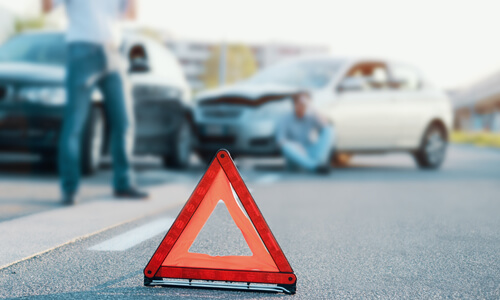What type of coverage does your auto insurance policy provide? If you don’t know or understand what kind of coverages are available to you, don’t feel bad. Auto insurance is one of those things that people know they need for protection, but that’s about the extent of their knowledge. And people forgetting what’s in their policy happens all the time.
But truth be told, everyone should know what’s in their auto insurance policy and exactly how it protects them. If you don’t, there’s a chance you’ll find out the hard way, i.e., when you file a claim, you may discover that you don’t have a specific type of coverage or appropriate limits to cover the costs associated with an accident or incident involving your vehicle.
What Are the Major Types of Auto Insurance Coverage?
When taking out a new auto policy or renewing an existing one, it’s important to know about the three main types of insurance coverage and how each one protects you.
Liability Coverage
Just as the name suggests, this type of coverage protects you from liability when you’re at fault for a car accident. In that event, it pays for the following expenses after you’ve kicked in your deductible and up to your liability coverage limit:
- Medical expenses and lost wages of someone else injured in the incident
- Repair of someone else’s damaged vehicle or property as a result of the accident
- Legal defense if you’re sued because of the accident
Liability coverage is included in almost all auto insurance policies because most states require at least a minimum amount of it for you to legally drive your vehicle. However, your state’s minimum liability limit is typically not a good guide for choosing your own policy’s limit because that minimum often doesn’t provide much coverage and puts you on the hook for anything that exceeds it.
Comprehensive Coverage
In this case, the name may fool you because comprehensive coverage actually protects you against the specific event that your vehicle is stolen or damaged by something other than a collision. In general, comprehensive coverage pays an amount up to your policy’s limit, which is usually the actual cash value of your car, toward its repair or replacement if it’s impacted by the following:
- Falling objects, such as hail, a tree or construction debris
- Fire
- Hitting an animal, such as a deer
- Natural disasters, such as a flood, hurricane or tornado
- Riot or civil disturbance
- Theft
- Vandalism
You can figure out the current cash value of your car by using websites like Kelley’s Blue Book, Edmunds or NADA.
Collision Coverage
And finally, as you can probably guess, collision coverage protects you by paying for the cost to repair or replace your vehicle if it’s damaged as the result of the following:
- Colliding with another car
- Hitting an object, such as a tree, building or a pothole
- Rolling over in a single-car crash
Just like with liability and comprehensive coverage, you’d have to pay your deductible first and then your insurance policy would pay up to your collision coverage limit, which is also typically the actual current cash value of your car.
Do I Need Comprehensive or Collision Coverage on My Vehicle?
Most car leases and loans require full coverage, which includes liability, comprehensive and collision, for as long as you’re leasing or financing your automobile. If you own your vehicle in full, you can choose whether to include comprehensive and/or collision coverage as part of your auto insurance policy. Experts recommend using these factors to help you decide whether you need either or both:
- Your financial situation: Could you afford to repair or replace your vehicle on your own if it’s involved in any of the situations described above? Keep in mind that those costs will be higher for newer or more expensive vehicles.
- Your driving habits: How much do you drive your car? For example, those with longer drives to work or who take a lot of road trips in their car have a higher risk of the situations above than those who put fewer miles on their car.
- Your location: Is your neighborhood full of old trees that could come down in a bad storm or does your city or town have a lot of construction going on? Is your vehicle a popular model for thieves or do you regularly drive roads where speeding is rampant? Conditions like these increase your need for more than just liability coverage.
One other thing to consider is your policy’s deductible amount. You can lower your auto insurance premium by choosing a higher deductible, but that means paying more out of pocket when you file a claim. If you don’t have an adequate emergency fund that will cover a higher deductible, you may be better off with a lower one that comes with a higher premium.
Talk to your insurance agent or provider for more help choosing the most appropriate coverages and deductibles for your auto insurance policy.
Editor’s note: Quorum is not affiliated with any of the companies mentioned in this article and derives no benefit from these businesses for placement in this article.






Absolutely essential to comprehend the intricacies of auto insurance coverage! Your vehicular safeguard comes in three flavors. Firstly, Liability Coverage shields you when driving leads to accidents and expenses, but those state-mandated minimums often fall short. Then, meet Comprehensive Coverage; despite the misleading name, it’s your protector against theft and non-collision damage. Calculate your car’s current value with online tools. Lastly, Collision Coverage is the hero in car collisions and unexpected rendezvous with trees or potholes. Remember, deductibles are the initial pitstop on your claim journey. If you’ve got the freedom of car ownership, weigh your financial capacity, driving habits, and location to decide if you need both. And pay attention to that deductible dance; it can sway your premium. For tailored advice, chat it out with your trusted insurance partner. Stay road-ready and secure!